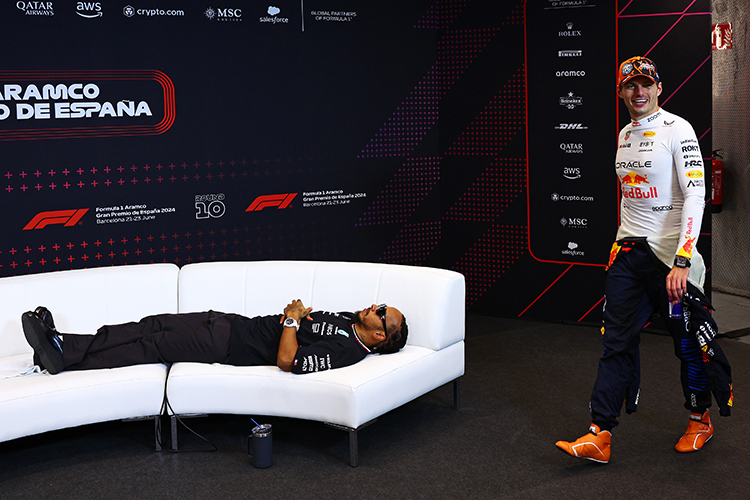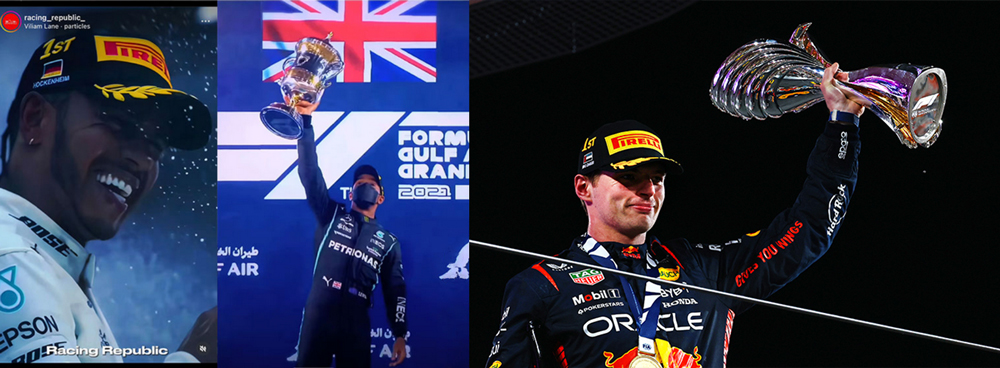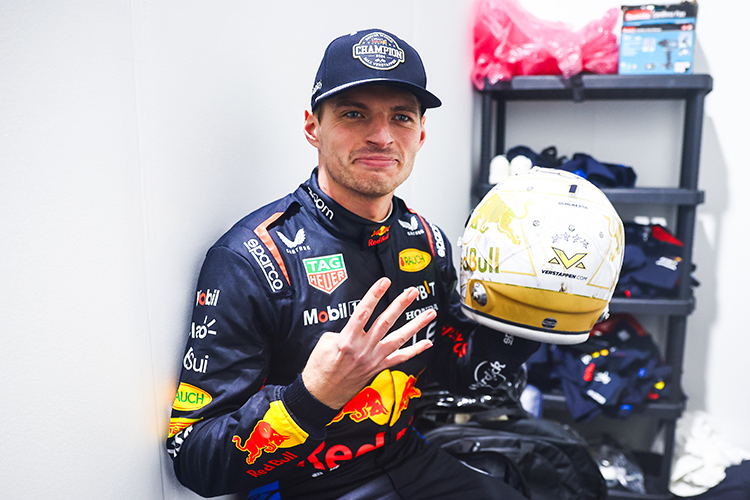The 10 best Formula 1 drivers ever: Hamilton, Schumacher and more
The 10 greatest Formula 1 drivers ranked — from Hamilton and Schumacher to Senna and Verstappen — exploring eras, titles, dominance and legacy.
Trying to rank the greatest Formula 1 drivers of all time is like trying to compare a Stradivarius to a Les Paul. Different eras, different tools, different dangers. Still, the best transcend the machinery. They bend eras to their will, shape teams around them, and leave a trail of jaw-dropping drives that live forever on highlight reels and in the minds of fans.
Below is a balanced, era-spanning top 10. It weighs titles and wins, yes, but also peak dominance, versatility across changing rules and cars, the quality of competition, racecraft in all conditions, and longevity. You’ll disagree with parts of it—and that’s half the fun.
How we ranked them
- Peak vs. longevity: dominance at their best and how long they stayed elite
- Versatility: success across different cars, teammates, and regulations
- Competition: how tough the era and teammates were
- Racecraft: qualifying speed, wet-weather prowess, tire and fuel management, overtaking
- Impact: technical development, leadership, cultural footprint
1. Lewis Hamilton
The case for No. 1: Record wins and poles, seven world titles across multiple eras, and an absurdly high floor for mistakes. Hamilton redefined sustained excellence, from rookie fireworks against Alonso in 2007 to guiding Mercedes through the hybrid era. His wet-weather class (Silverstone 2008, Istanbul 2020) and qualifying explosiveness made Sundays look inevitable. After two winless seasons, he returned to the top step at the 2024 British GP—at home, no less—underlining his longevity and adaptability.
Signature stat: The most poles and wins in F1 history; podiums on more than half his race starts.
Iconic drives: Silverstone 2008 in the wet; Brazil 2008 title decider; Germany 2018 comeback win.
Why the debate? Critics point to dominant Mercedes machinery. The counter: multiple regulation changes, strong teammates (Alonso, Button, Rosberg, Bottas), and Hamilton kept winning.
2. Michael Schumacher
The ruthlessly efficient standard-setter. Schumacher built the Ferrari juggernaut of 2000–04 with relentless testing, supreme fitness, and race-by-race perfection. He combined qualifying speed with metronomic pace in clean air and cutthroat racecraft in traffic. The numbers—seven titles, 91 wins—tell one story; the way he dragged a rebuilding team to glory tells another.
Signature stat: Five straight titles (2000–04).
Iconic drives: Spain 1996 in torrential rain; Hungary 1998 “three-stop” masterclass; France 2004 dominance.
The asterisk column: Controversies at Adelaide 1994 and Jerez 1997, and aggressive wheel-to-wheel ethics. Even so, the overall body of work is towering.
3. Juan Manuel Fangio
The maestro of efficiency. Fangio won five championships in the most perilous decade of F1, switching teams fluidly and winning with almost clinical inevitability. His win rate remains astonishing, and the 1957 Nürburgring comeback—hunting down and passing the Ferraris after a late stop—is often called the greatest single drive in history.
Signature stat: Five titles with four different teams in the 1950s; one of the highest win percentages ever.
Iconic drive: Nürburgring 1957, full stop.
Era context: He raced when cars broke often and tracks bit back. That he rose above that chaos enhances, not clouds, his legacy.
4. Ayrton Senna
Pure, visceral speed. Senna’s qualifying laps looked like slow-motion replays in real time—every correction, every millimeter counted. Three titles only hint at his aura. His duels with Prost defined a generation; his wet-weather wizardry (Monaco ’84, Donington ’93) still tops fan lists. He changed not just how drivers attacked a lap, but how they thought about the art of driving itself.
Signature stat: 65 poles when he retired, a record that stood for years.
Iconic drives: Donington 1993 opening lap; Monaco 1988 qualifying.
The debate: With different luck or politics, he could have five or more titles. But greatness is also what you do with what you get—and Senna made legend out of Sundays.
5. Alain Prost
The Professor turned races into equations—and then solved them. Four titles, 51 wins, and a peerless understanding of tires, fuel, and pace. If Senna was lightning, Prost was the storm front: subtle, patient, inevitable. He beat Lauda as a teammate on points in 1984 (losing the title by half a point), and later beat Senna head-to-head in 1989.
Signature stat: Four championships across the brutal 1980s–early ’90s arms race.
Iconic drives: Mexico 1990 charge from 13th; his meticulous 1986 season-long battle.
What skeptics say: Less spectacular than Senna. What supporters answer: That’s the point—he made winning look routine.
6. Max Verstappen
A phenom who matured into a metronome. By his early twenties he owned the outside line and late-braking duels; by 2023 he was crushing seasons with ruthless, almost error-free efficiency. He turned qualifying laps into tire-saving clinics on Sunday, racked up a historic win tally in a single year, and demolished team benchmarks.
Signature stat: A record-breaking 2023 season for wins, points and laps led.
Iconic drives: Brazil 2016 wet-weather charge; USA 2021 tire-life masterclass; numerous 2023 “control from the front” victories.
Caveat and promise: He’s still writing his story. Three titles (as of late 2024) put him in rarefied air already; longevity and success under future rules will decide how high he climbs.
7. Jim Clark
The natural. Clark made the violent cars of the 1960s look serene. Two titles barely reflect his skill; reliability heartbreak probably cost him more. He also crossed disciplines effortlessly, winning the 1965 Indy 500. His raw speed and mechanical sympathy gave Lotus a weapon that often seemed unfair.
Signature stat: Off-the-charts win and pole percentages for his era.
Iconic drives: Dominant 1965 season; countless measured performances that made fast look smooth.
Legacy footnote: A career tragically cut short; even so, the imprint is indelible.
8. Niki Lauda
The ultimate racer’s racer. Lauda paired engineering brain with competitive steel. He molded Ferrari into champions, survived and returned from the horrific 1976 Nürburgring crash in six weeks, then reinvented himself for a third title with McLaren in 1984—beating Prost by half a point through relentless consistency.
Signature stat: Three championships across two distinct eras and teams.
Iconic moments: His 1976 comeback; tactical mastery throughout 1984.
Beyond the cockpit: A straight-talking leader who later helped steer Mercedes’ modern dynasty.
9. Jackie Stewart
Elegance at speed in the sport’s most dangerous period. Stewart’s smoothness saved tires and lives—literally, as he pushed modern safety into a stubborn paddock. He won three titles with clinical efficiency and often by huge margins, in machinery that demanded respect.
Signature stat: Three titles by 1973, then retirement at the top.
Iconic drives: Nurburgring and Clermont-Ferrand masterclasses, rain or shine.
Contribution: If you like modern F1’s safety standards, you’re living in Stewart’s legacy.
10. Sebastian Vettel
A perfectionist in clean air, a fighter in transition. Vettel’s four straight titles with Red Bull included a record run of consecutive wins in 2013 and some of the most devastating qualifying laps of the era. He reinvented himself at Ferrari with stirring charges (think Bahrain 2017, Canada 2018 pole), and later became a thoughtful elder statesman.
Signature stat: Four consecutive championships; more than 50 wins.
Iconic drives: Abu Dhabi 2010 title clincher; India 2013 domination; Malaysia 2015 Ferrari breakthrough.
The knock: Struggled more with pointy rear ends and in heavy-traffic eras. The response: His peak was one of the highest we’ve seen.
The near-misses and honorable mentions
- Fernando Alonso: Two titles don’t capture his completeness. A racecraft savant who made miracles in sub-front-running cars, with longevity that borders on the absurd.
- Stirling Moss: The best never to win the title; sportsmanship cost him one in 1958. Versatility across categories was unmatched.
- Nelson Piquet: Three titles, as crafty as they come. Adaptable and razor-sharp in battle.
- Jack Brabham: Three-time champ who won in a car bearing his own name. Unthinkable today.
- Alberto Ascari: Early-1950s dominance; clinical and quick.
- Mika Häkkinen: The only man to consistently trouble Schumacher at his peak.
- Nigel Mansell: A single title but raw speed galore; 1992 was a steamroller.
- Kimi Räikkönen: Blunt, fast, and freakishly consistent at his peak; 2007 champ.
- Mario Andretti: A global legend who conquered F1 in 1978 and everything else besides.
Era context: Why comparing across decades is messy
- Technology swings: From front-engined brutes to ground effect, turbos, V10 screamers, and hybrid complexity. Skill sets evolve.
- Safety and risk: Fangio and Stewart’s eras were lethal; today demands different mental and technical bandwidth.
- Team dynamics: Testing bans, simulator eras, cost caps—how drivers influence car development has changed.
- Competition density: The modern grid is deeper, but early grids were mechanically fickle. Both realities shape how greatness appears.
Teammates: the ultimate yardstick
- Hamilton drew with Alonso as a rookie, edged Button overall, split titles with Rosberg.
- Schumacher overwhelmed Barrichello and Irvine, then returned from retirement to mentor at Mercedes.
- Prost went toe-to-toe with Lauda and Senna and came out with four titles.
- Verstappen has decisively benchmarked teammates since 2019.
- Lauda-Prost 1984 remains the gold standard of intra-team title tension.
Five races to rewatch if you love greatness
- Germany 1957 (Fangio): The textbook on patience, pace, and bravery.
- Monaco 1988 (Senna): Qualifying as high art.
- Spain 1996 (Schumacher): Rain mastery that birthed a legend at Ferrari.
- Silverstone 2008 (Hamilton): A wet-weather demolition.
- Brazil 2012 (Vettel): Title pressure, early incident, relentless recovery.
So who’s No. 1?
If you prize raw, blinding speed, you’ll argue Senna. If you love project-building dominance, you’ll pick Schumacher. If you want sustained excellence across changing eras, Hamilton’s body of work stands tallest. And if Verstappen keeps up his historic form into a second regulation cycle, the conversation will morph again.
What matters most is that these drivers didn’t just win—they defined how winning looks in their time. That’s the thread connecting Fangio’s cigar-smoke cool to Hamilton’s hybrid-era finesse and Verstappen’s relentless precision.
Your turn
Tell us your top 10 and, more importantly, the one race that made you fall in love with each driver. Debate is the lifeblood of F1, and the greats give us reasons to argue every season anew.
Up Next



